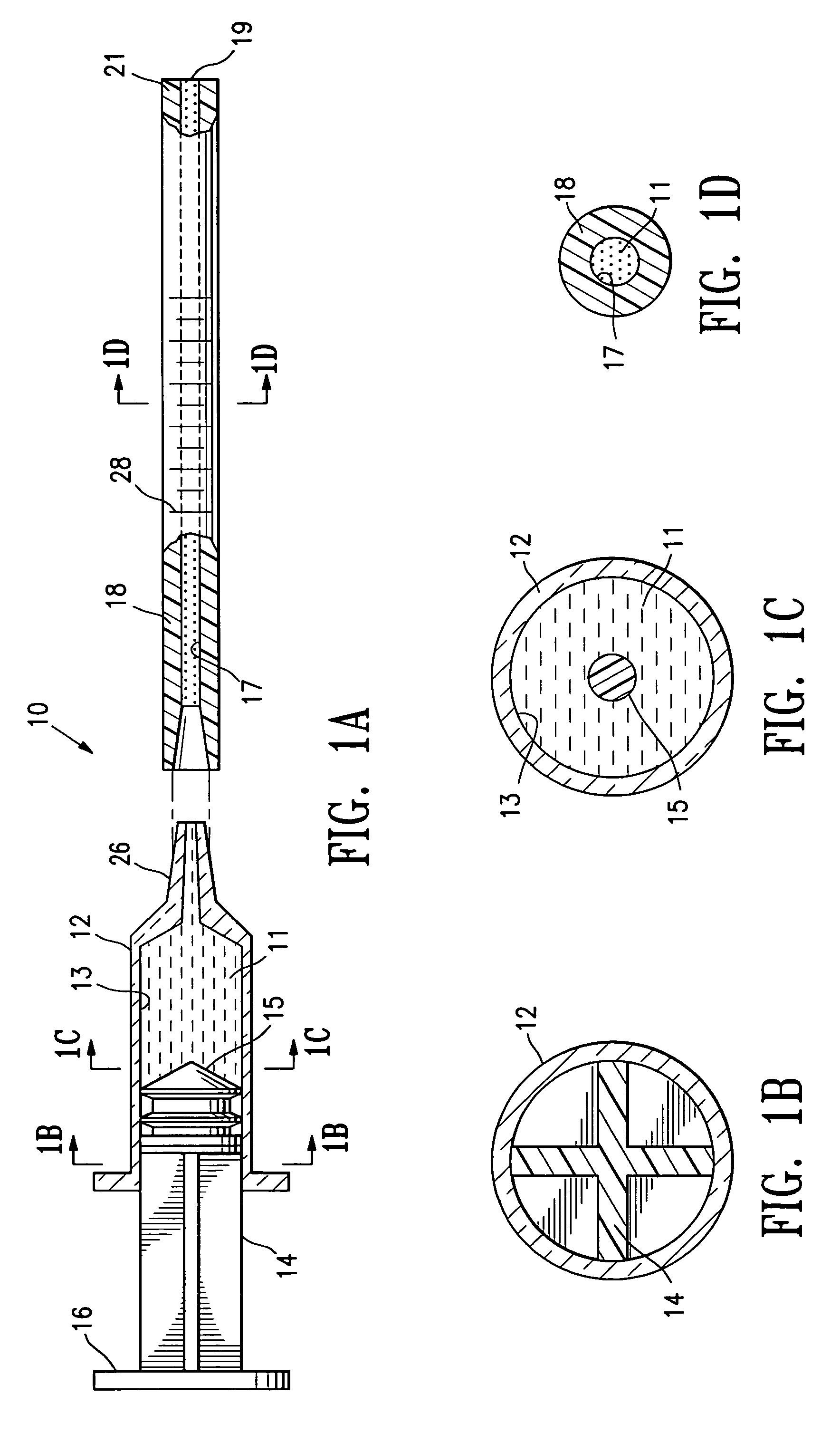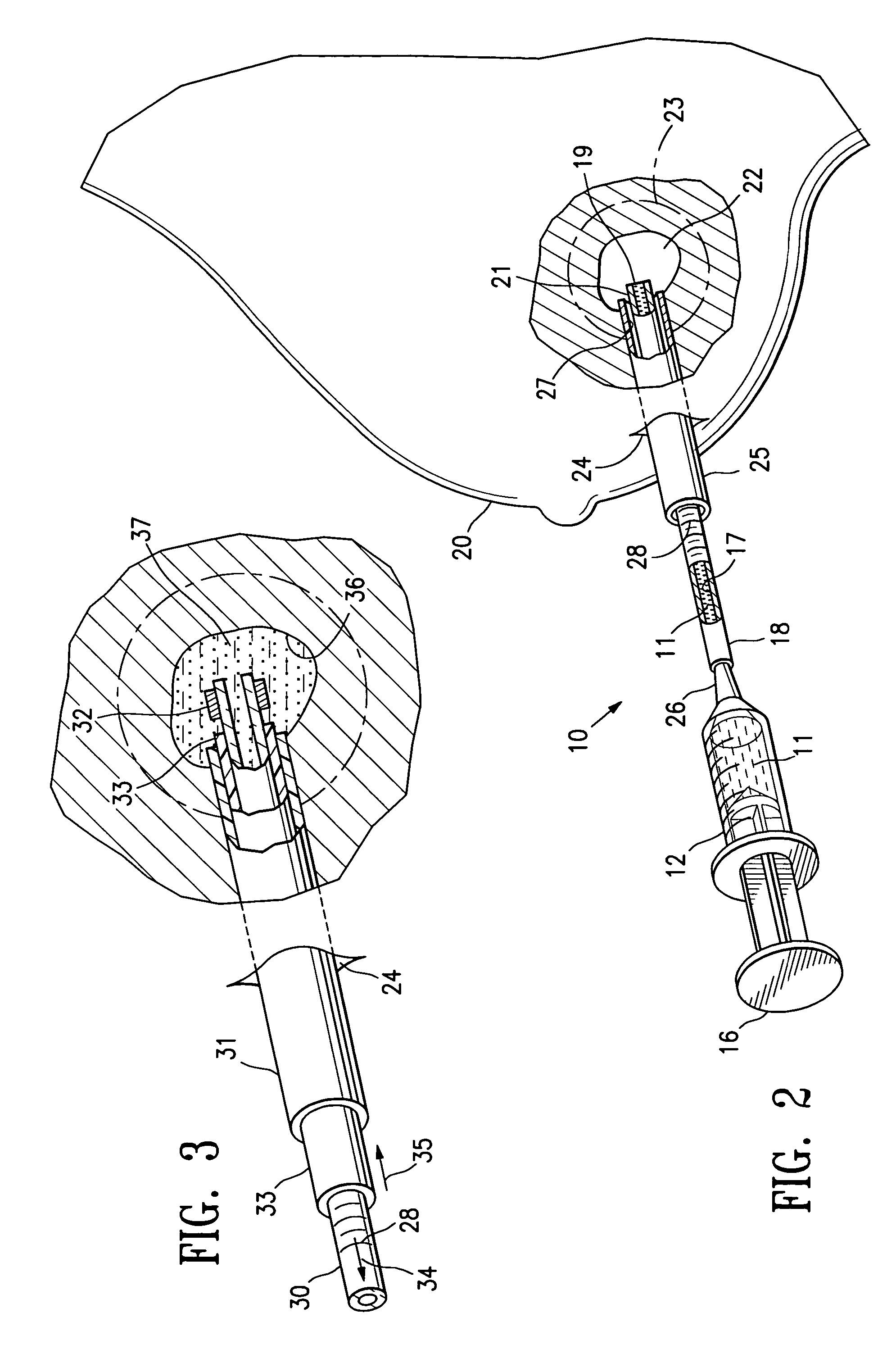Marker or filler forming fluid
a filler and marker technology, applied in the field of filler or marker material introduction into the patient's body, can solve the problems of radiographically visible tissue features, altered or obscured, days or weeks before,
- Summary
- Abstract
- Description
- Claims
- Application Information
AI Technical Summary
Benefits of technology
Problems solved by technology
Method used
Image
Examples
Embodiment Construction
[0030]FIGS. 1A-1D illustrate a system 10 for delivery of biopsy marker fluid 11 embodying features of the invention to a biopsy site within a patient's body. The system 10 includes a syringe 12 having a bore 13 containing a quantity of biopsy marker fluid 11. A plunger 14 with a sealable distal end 15 is slidably disposed within the bore 13 of syringe 12. Application of pressure to the head 16 of plunger 14 applies pressure to the fluid 11 and causes the discharge of fluid 11 from the bore 13 into the inner lumen 17 of delivery tube 18 secured to the discharge end of syringe 12. The marker fluid 11 passes through the inner lumen or bore 17 of the delivery tube 18 and out the discharge port 19 in the distal end of delivery tube 18.
[0031]As schematically illustrated in FIG. 1A, delivery tube 18 is secured to the syringe 12 by a friction fit. However, those skilled in the art will recognize that a variety of connections may be made between the syringe 12 and the delivery tube 18 such a...
PUM
 Login to View More
Login to View More Abstract
Description
Claims
Application Information
 Login to View More
Login to View More - R&D
- Intellectual Property
- Life Sciences
- Materials
- Tech Scout
- Unparalleled Data Quality
- Higher Quality Content
- 60% Fewer Hallucinations
Browse by: Latest US Patents, China's latest patents, Technical Efficacy Thesaurus, Application Domain, Technology Topic, Popular Technical Reports.
© 2025 PatSnap. All rights reserved.Legal|Privacy policy|Modern Slavery Act Transparency Statement|Sitemap|About US| Contact US: help@patsnap.com



